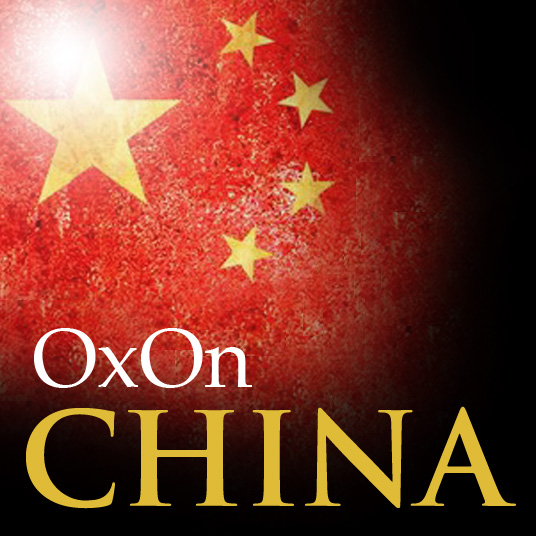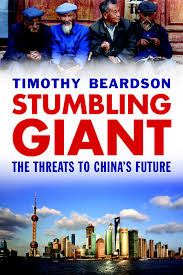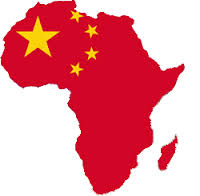
“Illegal” Orphanages: Legality and Legitimacy in Chinese Culture
In January of this year, The Huffington Post reported on a fire that killed six children and one young adult “at an illegally run orphanage in central China”:
“The deaths Friday in Henan province’s Lankao county have spotlighted China’s lack of government-run child services. They are often left to private citizens with few resources and no legal authority. The Lankao government earlier acknowledged that it had turned a blind eye to the illegal orphanage, which cared for abandoned children and young adults. …The deputy county governor said earlier that some departments had failed in supervision and should shoulder responsibility.”
Unregulated orphanages are exceedingly common in China. Official government estimates put the number of “orphans” (the term is used loosely to include children who have been abandoned, and in fact have one or both parents still living – the Chinese term for orphan, gu’er (孤儿) – literally “solitary/lonely child” accommodates this) in China at over half a million as of 2011.[1] The state orphanage system designed to care for these children is characterized by a rural/urban dichotomy. Orphanages are located in urban centers; orphans and abandoned children in rural areas (who account for around 85% of the total orphan population) do not have access to these state-run institutions.[2] A variety of welfare programs exist in rural areas to support the indigent, including children without parental care, and many orphans and “foundlings” are taken in by relatives or neighbors[3]; but despite this, there is a conspicuous gap in the state’s orphan welfare program when it comes to rural China. This gap is filled, as the above article alludes to, by “private citizens with few resources and no legal authority”.

Economist Book review: China’s War with Japan, 1937–1945: The Struggle for Survival, by Oxford’s Rana Mitter
AS JAPANESE troops advanced on the Chinese capital of Nanjing in 1937, Zhou Fohai, a senior official in the Chinese government, wrote in his diary of the panic and fear consuming the city. He anticipated the destruction and its implications for his nation: “China will have no more history,” he wrote.
The devastation that the Japanese invasion would wreak was indeed shocking. But as Rana Mitter shows in his illuminating and meticulously researched new book about the Sino-Japanese war, not only did Chinese history not end with the fall of Nanjing, but in many ways the war helped to create modern China. It was the anvil on which the new nation was forged.
Other historians point to the arrival of British gunboats in the 1830s, when industrialising Europe collided with ancient China, as the dawn of China’s modern age. But Mr Mitter, a professor at Oxford University, believes that the country’s war with Japan was more important because it reduced China to its weakest state. “Suddenly the circumstances of war made the concept of the nation, and personal identification with it, more urgent and meaningful for many Chinese.”

Social and environmental injustice in rural China
It is well-known that one of the key fault lines of inequality in China is the rural-urban divide. Rural China has been the engine of much development through industrialisation; through farming to provide food for China’s cities; and through land grabs which open new areas for investment and government revenue. Yet the benefits of such development are distributed unfairly. Many rural residents either do not benefit directly from development or do so at great cost to their health. These inequalities are compounded by the continued disparity in welfare provision between rural and urban areas. Welfare provision in China’s countryside has doubtlessly improved after the introduction of rural healthcare cooperatives in recent years, but it remains limited. Illness is as an extreme embodiment of routinized and recurrent forms of social suffering and exclusion from various forms of care and welfare. As I document in my book, Fighting for Breath, a population’s attempt to secure care is both a physical and a social struggle to maintain integrity and to ensure family and neighbourly support.
Over the past decade, I have spent almost two years living in rural China and researching attitudes to development,illness, pollution and morality. This has brought me to witness first-hand some of the often unthinkable suffering rural villagers face (environmental and otherwise), as well as poignant moments of human dignity, kindness and resilience. Many of these scenes will stay with me forever. A woman in her fifties salvaging roof tiles before she demolished by hand her own newly built home to make space for a road. A seventy-year-old woman refusing treatment for glaucoma — because ‘one eye is enough’ — whilst opting to save the money for her grandson’s education. My host tending to her dying father (suffering from oesophagus cancer) as he spat blood into newspaper scraps. Sixty-year-old Uncle Wang committing suicide by drinking pesticide in the final stages of stomach cancer. His wife, a few years later, scavenging plastic bottles in the township to boost the family’s income and support her granddaughter’s education. Villagers growing crops in fields they know to be severely polluted. An anti-incinerator activist lying in bed surrounded by flies next to his sick wife after suffering a stroke.

Small Details Make for Big Injustices: Re-education through Labour and Administrative Litigation
The legal relationship between the Chinese state and the citizen are contradictory. The laws on administrative litigation are on one side of the spectrum. They allow the Chinese to sue their government, one of the regime’s most promising reforms (though it has often failed to live up to its potential). On the other hand, re-education through labour (RETL) (laojiao (劳教)), a draconian detention programme, has long been a focal point for critics of China’s human rights record, whereby China’s police can sentence an individual to three years (with a possible 4th year extension) in a labour camp without a trial
Particular cases bear out these contradictions. Tang Hui and Zhao Meifu, two women detained separately under China’s re-education through labour system, have become so well known in China that they helped prompt calls for reforming the RETL system. Yet, both women were recently denied compensation by China’s administrative courts. While criticism of China’s human rights record and courts tends to be very general, these cases show that the small details of China’s legal system showcase the biggest injustices.

Exposing wrongdoing and controlling public opinion through online video in China
In this video [click on full post], a young woman sits on the floor tearfully telling her story: Yue Dan was on holiday in the southern city of Sanya with her husband. Returning to their car, the couple got into a dispute with a parking attendant. According to Yue, a group of men in suits arrived and started beating them. When the police arrived, they joined in beating the travelers without attempting to assess the situation and deaf to Yue’s pleas for mercy. The five-minute-long video ends with photos of the women’s injuries and videos shot by bystanders1.
Yue’s story is just one of a multitude of examples of how Chinese citizens are increasingly using online video to seek justice, retribution or recompense for wrongdoing, and build public support for their cause. However, public response is generally ephemeral and sporadic, and the authorities often aggressively act to control and prevent these attempts to harness the power of Chinese netizens.
The video, which implores media and web users to publicize Yue’s story and help her achieve justice, was posted to the microblogging platform Weibo on 12 February by a tiny blog called Sanya Hero. Although my current research involves tracking the flow of information and comments on Weibo, it is impossible in this case; the video was rapidly removed. A comment on the same blog less than ninety minutes later, thanks readers for forwarding the video, but instructs them to remain rational and wait for an official resolution.

China in the 21st century – not the superpower that some say it will be
This Wednesday at 5 PM, author Timothy Beardson will discuss his new book, “Stumbling Giant”, at the Institute for Chinese Studies. The book examines the challenges to China’s rise and discusses their impact and the policy prescriptions available to confront them.
The overwhelming majority of the literature in recent years has suggested that China will eventually occupy America’s recent role as the global superpower. While avoiding histrionic extremes such as eventual dominion or coming collapse, Mr Beardson disagrees, arguing that it is highly unlikely that China will become the world’s superpower in the 21st century.

Debating China’s North Korea policy
Following North Korea’s third nuclear weapons test in February this year, much attention has been paid to debates within China over its troublesome neighbour, with some suggesting severing ties to the North altogether. Do these discussions reflect a fundamental shift underway in China’s North Korea policy? Not necessarily.

China in Africa: More about Africa than China
Over the past decade, Chinese priorities have shifted. Before, foreign aid, investment and technology were an import. Now, each is an export. The speed and scope of this change—as Chinese firms, diplomats, traders and cash ‘go out’ in ever-increasing numbers—has ignited controversy and hyperbole. These debates rage in advanced economies in response to China’s rising clout and the acquisitions of global brands by its rapidly internationalising firms.
They are also at fever pitch in the emerging world—where China has become an important new financier, development partner, and source of foreign direct investment (FDI). This is nowhere more visible than in Africa, where Chinese engagement has received far more attention than seems warranted at first glance. Chinese FDI flows to Africa make up only around two to four percent of the country’s total outward investment each year. Chinese FDI stock on the continent is a fraction of investments in Europe and the United States. However, these figures are growing rapidly, buttressed by an explosion in trade volumes—nearly doubling in the past four years alone to an estimated $200 billion in 2012—as well as deepening diplomatic engagement, development assistance, and accelerating migration between the two regions.









